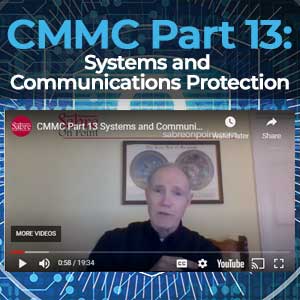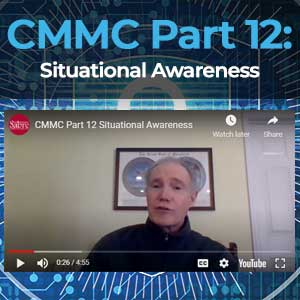
How Government Suppliers Should Prepare for Cyber Challenges Today
Bob Hanley is the Senior Executive Director of Operations at Sabre On Point for Cyber Security Safety and Engineering, where he develops and implements cyber defense in-depth capabilities for civilian, commercial, federal, and Department of Defense applications. In his nearly four decades with the Navy, he helped establish and improve their cyber security systems, including co-writing their current SecNav policy on Cyber Security Safety.
At Sabre On Point, we pride ourselves in our ability to provide government suppliers with all-encompassing, premier cyber protection. Every year, thousands of cyber attacks are launched on government agencies, from the US Department of Defense to Homeland Security. These range from phishing scams to impersonation, and everything in between. How can you be ready for these inevitable attacks? In my experience, these are the most critical challenges that face our government’s infrastructure in the cyber world.
Change your cyber mindset.
Our strongest instinct is often to invest the most time and resources into creating a strong first line of defense. In cyber security that first line is boundary protection. The paradigm for cyber security priorities needs to be shifted from boundary to in-depth, layered protection. Once that first line of defense has been breached, are the rest of your defenses ready? As government sectors continue to rely more heavily on online data storage and usage, more preparation must be made to defend that data against cyber warfare.
Understand your risk.
The role of cyber risk assessments in your cyber defense strategy is imperative to overall protection. You should have a full understanding of the cyber architecture you want to defend, its critical systems, and its vulnerabilities. Where are the weaknesses? Government entities are never exempt from being at risk for a cyber attacks. In 2017 alone, government and military sectors were breached 74 times, according to The Statistics Portal. Federal agencies have also seen a 10% growth in cyber security incidents between 2016 and 2017. The attack vectors that could be exploited to compromise your systems along with the potential impact of a breach need to be assessed to establish mitigation strategies.. The more aware you are of your weaknesses, the more work you can apply to strengthening them.
Know your network.
Although close knit networks are necessary and valuable among government suppliers, every dot can be connected and potentially exposed. Understanding all of the associations between your people, your processes, your protections and your information is a step toward securing both yourself and those links. Global connections can serve as nodes or access points that can create cyber threat vectors into your information technology. Almost 2,000 cyber attacks were made on the Department of Defense in 2017, and 377 of those attacks were made using email phishing. Take the steps to protect your network, because every email is a door that an attacker can figure out how to open.
As technology evolves, cyber attacks and breaches are becoming the norm rather than the exception. Sabre On Point is working ahead of the curve to ensure others are ready for those threats when they happen, not if they happen.
The advanced levels of protection Bob and his team bring from a military background and perspective are part of Sabre Safe, the new Premier Cyber Security Protection offered by Sabre On Point to provide government suppliers with the highest levels of defense in-depth.
Interested in learning how government-grade cyber security protocols can work for you?
Sabre On Point applies over three decades of government cyber security to companies of all sizes. Our custom, comprehensive solutions keep businesses secure before, during and after cyberattacks. For more information on protecting your company, contact Sabre On Point today to learn more about our cyber security risk assessment.





